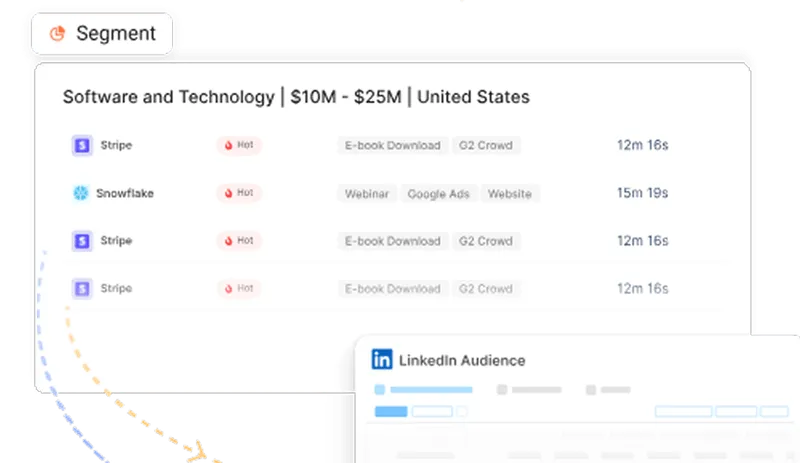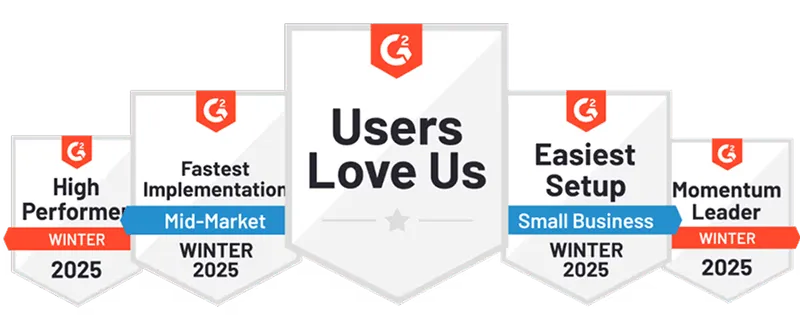Post-Sale Customer Journey: A Comprehensive Framework for Long-Term Success
Discover a comprehensive post-sale customer journey framework to boost retention and maximize lifetime value. Learn key stages, metrics, and strategies for B2B success.
B2B businesses love the chase - new logos, fresh leads, that dopamine hit of “another deal closed.” But here’s the problem: customer acquisition costs are climbing like they’ve had three espressos, while retention quietly sits in the corner, ignored, underrated, and, honestly, way more profitable.
Why the Post-Sale Customer Journey Matters
Bain & Company backs this up: You can improve retention by just 5% and profits can jump anywhere between 25% and 95%. (Yes, that stat makes every marketer sit up straighter.)
The secret to hitting those retention numbers is to rethink what customer success actually does for your customers. If it is treated like roadside assistance—only showing up when the car breaks down—you’ll always be one flat tire away from churn.
A smarter move would be to make them the navigators of your post-sale customer journey. They are the ones with the map, pointing out the fastest routes, avoiding potholes, pre-planning rest-stops, and ensuring customers actually enjoy the ride.
Because thriving businesses know this simple truth: post-sale customer journey isn’t a ‘nice-to-have.’ It’s about how many customers stay, how much more they buy, and how excited they are to tell others why you’re worth it.
A fantastic post-sale customer experience ensures renewals don’t come with an awkward pause before the signature. In short, it’s about treating customers like partners, not just paychecks.
Meeting Post-Sale Customer Demands with Data
If your CSMs are the navigators of the post-sale customer journey, then data is their GPS. Without it, they’re basically driving blind.
They expect onboarding faster than a CEO can tweet about ARR milestones, ROI they can point to without squinting, and engagement that’s authentic—not just a random ‘checking in’ email.
And data helps you bring authenticity into the conversations. Customer feedback, behavioral signals and usage patterns show you where the friction is hiding before it blows up. Suddenly, the customer experience isn't a one-size-fits-all snoozefest; it’s tailored, quick, and actually helpful.
Stitch the individual data points into a single dashboard, and sales, marketing, and success teams are all staring at the same picture. No more debates on those private Slack channels. Just a single, shared reality: how healthy the customer relationship really is.

How AI and Automation are Redefining Post-Sale Customer Engagement
Let’s be real: teams have a lot on their plate: cranking out decks, prepping QBRs, and trying to create the most comprehensive dashboard. Meanwhile, the customer sits in the shadows, tapping their watch, quietly wondering whether this is part of the standard procedure.
But here's the shift: AI can now handle the grunt work while you focus on what matters. Here's how it actually works:
- Usage dips flagged → Machine learning models track login frequency, feature adoption, and session length against healthy benchmarks. When a customer's activity falls outside the norm, it triggers an early warning.
- Adoption nudges launched → Automation pulls from usage data to trigger in-app messages, product walkthroughs, or emails when customers stall on key features. These nudges are personalized based on segment and past behavior.
- Upsell intent detected → Predictive AI analyzes purchase history, account growth, and product interactions to spot signals of expansion. It then drops the right playbook into the CSM's workflow, so outreach feels timely, not salesy.
It's like having a teammate who actually understands customers and reacts instantly—without stealing your lunch or the credit for your ideas.
Gartner puts numbers to it: by 2029, agentic AI will resolve 80% of everyday customer issues and shave 30% off operating costs.
The Six Stages of the Post-Sale Customer Journey
Dashboards and automation give you clarity, but customers aren’t just data points—they’re very real humans navigating a journey with you. Let’s break this journey down into six stages. Think of these stages as a series of oscillating, complex emotions—part excitement, part panic, part “what did I get myself into?”—that every customer cycles through, as they move from first use to full adoption.
Mastering this emotional rollercoaster is about making customers feel understood, supported, and maybe even a little delighted along the way.

1. Onboarding and Implementation
The journey begins with onboarding—making it a critical first impression. A frictionless onboarding experience goes beyond convenience; it defines how the partnership will evolve.
Great onboarding involves a clear sales-to-success handoff, structured training programs, rapid time-to-value, and the quick realization of early wins. This stage should leave customers feeling confident in their ability to use the solution and optimistic about its impact on their business.
2. Initial Value Realization
The next step is ensuring customers recognize value quickly. Early ROI demonstrations are critical to retain B2B customers. Customers who experience clear results early on are more likely to stay invested.
For instance, a SaaS company might highlight how a client reduced reporting time from two days to two hours using their platform. These milestones build credibility and justify the investment.
3. Adoption Expansion
This stage often involves encouraging teams to expand product usage, explore advanced features, integrate the platform more deeply, and unlock additional capabilities.
Businesses can spot accounts leaning into advanced usage and identify high-potential expansion opportunities by leveraging account intelligence tools for customer success.
4. Renewal Preparation
Companies that conduct quarterly business reviews, provide continuous ROI reporting, and hold strategic check-ins position themselves as true partners rather than mere vendors.
This approach lowers churn risk and shifts end-of-contract discussions towards scaling opportunities instead of justifying value.
5. Upsell and Cross-Sell
This step involves upgrading to premium plans, adding more user licenses, or adopting complementary solutions. However, successful upselling isn’t about pushing more—it’s about aligning offers with customer goals.
6. Advocacy Development
The final stage is customer advocacy, which involves customers speaking on your behalf in testimonials, case studies, peer groups, and industry forums.
Advocacy is the most powerful driver of organic growth as referrals from existing customers often help convert prospects faster.
💡Also read: 5 stages of the customer journey
Building a Post-Sale Customer Journey Framework
Why bother with a framework? Because without one, your post-sale customer journey is basically a random mess of check-ins, tickets, and “oops, did we forget about them again?” A framework gives you a map, a plan, and a little structure —so every touchpoint isn’t just another shot in the dark, but a deliberate move to keep customers happy and engaged.

1. Map Every Touchpoint
Create a visual journey map covering interactions across sales, onboarding, customer success, marketing, and support.
2. Identify Friction Points
Examples:
- Long onboarding cycles → introduce guided automation.
- Weak product adoption → deploy contextual learning and training.
- Renewal hesitation → provide ROI dashboards.
3. Ensure Cross-Functional Alignment
- Sales → Sets clear expectations.
- Marketing → Reinforces with education and resources.
- Customer Success → Delivers on promises.
4. Scale by Segments
Adopt a tiered engagement model:
- High-touch: Enterprise clients with dedicated success managers.
- Tech-touch: SMBs supported via automation and digital touchpoints.
It works! A Forrester study found that companies with structured customer success frameworks pull in 107% ROI within three years—and that translates directly into better renewals, upsells, and long-term growth. Investing in customer success isn’t optional. It literally pays for itself… and then some.
💡 Learn more about CRM Workflow Automation and how to boost efficiency & customer engagement
Measuring the Success of Post-Sale Customer Engagement
You can line up all the right plays—map behavior, track intent, automate workflows—but if you’re not measuring properly, you’re basically a coach pacing the sidelines, wondering if your game plan is even working.
Retention and churn? That’ll tell you the basics. NPS? Think of it as your fan chants—are they cheering your name or booing you off the field? CLV? That’s the season ticket revenue; it puts a dollar sign on loyalty, the real long game. And health scores? They’re your halftime stats, warning you where the defense is cracking before the other team runs away with it. Skip these, and you’re basically hoping for a win without checking the score. But let’s be real—hope is not a strategy.
Keep these formulas handy to measure your strategic success:
- Customer Health Scoring
Composite customer health scores are increasingly popular, combining data and signals from various touchpoints along with customer sentiment or feedback. Weighted appropriately, they provide predictive insights into churn risk or potential to expand horizontally and vertically.

- ROI of Post-Sale Programs
Calculating ROI ensures you know whether your investment in post-sale processes is paying off.

Optimizing Post-Sale Customer Experience with Factors
A good carpenter knows his tools, but even a pro can’t fix a squeaky post-sale customer journey without the right strategy. It's about timing, insight, and making life easier for both your teams and your customers. That’s exactly where Factors steps in: intent capture, account intelligence, and workflow automation stitched together to turn customers into loyal advocates instead of one-time wins.
Intent Capture is where it starts. Every click, download, or product login? Factors pulls those digital signals into a single, clear view. Suddenly, you know who’s actually engaged and what they care about—so customer success teams and marketers stop guessing and start engaging with precision.
Account Intelligence takes it up a notch. By layering firmographic data, campaign activity, and usage trends, Factors gives you a 360° snapshot of which accounts are ready to renew, upgrade, or expand. Translation: less wasted energy, more focus on accounts that will actually move the needle.
Workflow Automation is the final piece of the puzzle. Instead of chasing leads with endless manual follow-ups, Factors automates the tedious tasks for you—renewals, adoption nudges, and health checks—so your teams can focus on the conversations that truly matter. Plus, analytics run in the background to show you what’s working and what’s not.
Put it all together, and you’re not just managing the post-sale customer experience, you’re upgrading it. With Factors, businesses move from firefighting churn to building seamless, sticky, long-term customer relationships that drive serious lifetime value.
To sum it up
Look, we get it. Long blogs might seem like period dramas, you start strong, but by paragraph three, your attention span clocks out. So if you scrolled straight here (hi, lazy reader 👋), here’s the deal: the post-sale customer journey isn’t rocket science. With Factors, it boils down to four steps:
Step 1: Audit the customer experience and spot the gaps.
Step 2: Use Factors to pull siloed data into one clean, usable view.
Step 3: Layer in Factors’ intent signals and account intelligence so you know which customers need what—before they even say it.
Step 4: Automate the gruntwork with Factors’ workflows so your teams spend less time firefighting and more time actually helping customers.
The result? Customers feel understood, stick around longer, and deliver way more value.
FAQs
Q. What is the post-sale customer journey?
A. The post-sale customer journey captures the full spectrum of interactions after purchase, influencing customer satisfaction, retention, and growth. It guides customers from onboarding to adoption, helps them realize value, prepares them for renewal, opens doors to upsell opportunities, and builds lasting relationships.
Q. Why is the post-sale customer journey critical for B2B businesses?
A. For B2B organizations, the customer success journey after purchase is where long-term value is created. Even a 5% increase in retention can yield 25–95% profit growth. Effective B2B customer retention strategies, like seamless engagement and personalized support, turn first-time buyers into long-term partners.
Q. What are the main stages of the post-sale customer journey?
A. The post-sale customer journey stages typically include:
- Onboarding and implementation
- Initial value realization
- Adoption expansion
- Renewal preparation
- Growth through upsell and cross-sell
- Advocacy development
Mapping these stages through customer success journey mapping helps organizations optimize each touchpoint.
Q. How does AI enhance the post-sale customer experience management?
A. AI and automation transform post-sale customer experience management by predicting churn risks, automating personalized engagement, and surfacing upsell opportunities. Tools like account intelligence for customer success analyze intent signals and usage patterns to guide customer success teams.
Q. What metrics define success?
A. Key post-sale engagement metrics include churn rate, Net Promoter Score (NPS), customer health scores, renewal rate, Net Revenue Retention (NRR), and customer lifetime value. Tracking these ensures businesses can identify risks early and scale what works best.
Q. How do account intelligence platforms help?
A. Platforms like Factors help unify intent and engagement signals into one view, allowing intelligent, data-driven customer success strategies.
See how Factors can 2x your ROI
Boost your LinkedIn ROI in no time using data-driven insights


See Factors in action.
Schedule a personalized demo or sign up to get started for free
LinkedIn Marketing Partner
GDPR & SOC2 Type II
.svg)










